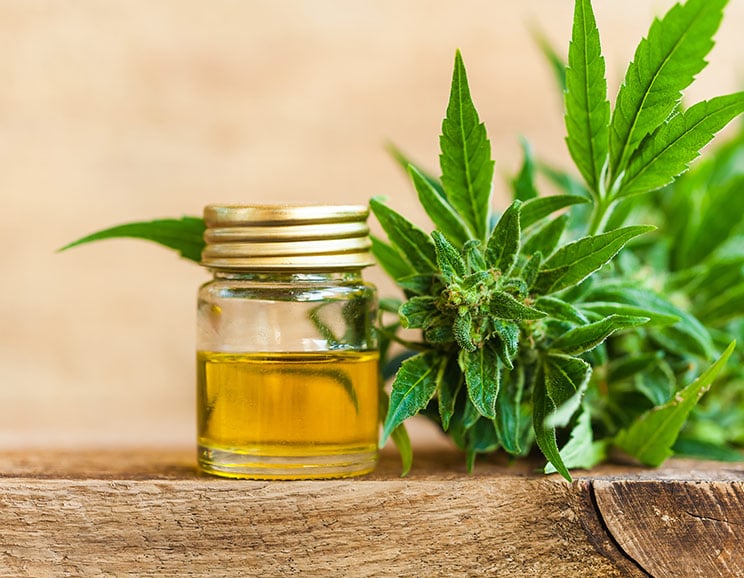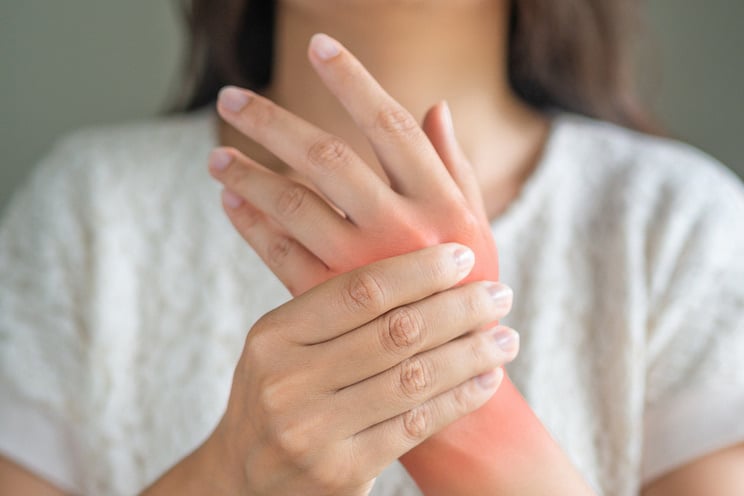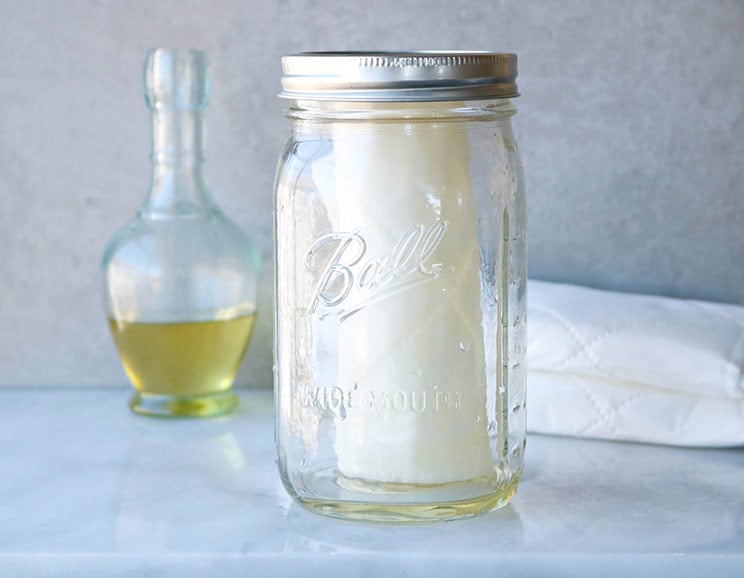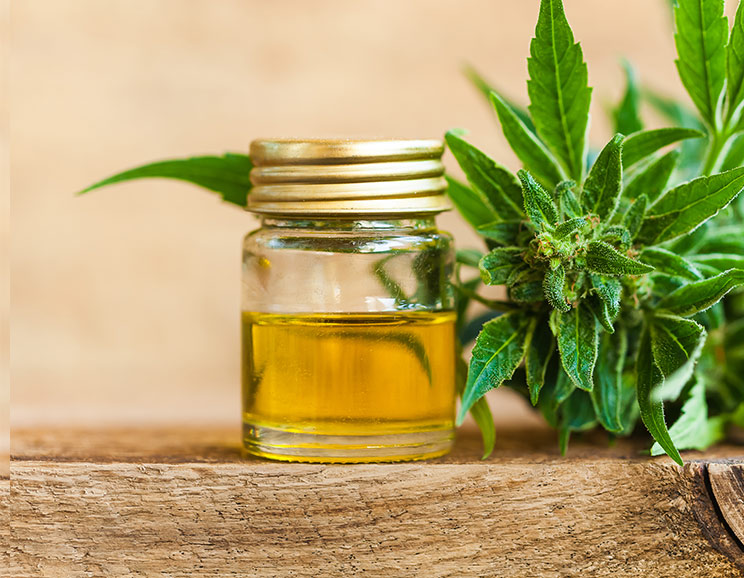We knew that CBD helps ease anxiety, but did you know that you can use CBD oil for joint pain too? Here’s what science has to say.
Arthritis currently affects over 54 million Americans, and treatment can be difficult. (1) Prescription medications come with a host of significant side effects and are often costly, even with insurance.
Some arthritis sufferers are seeking alternative ways to manage daily pain, and CBD oil is a popular choice. CBD is legal in most states, as it doesn’t cause the psychoactive effects of marijuana and isn’t habit-forming.
Fight inflammation and create easy, healthy meals! We've created a FREE 7-Day AIP Meal Plan
Get Your FREE 7-Day AIP Meal Plan here.
The internet is rife with miracle cure-all stories of CBD oil, but when it comes to addressing your pain, research actually supports this one. Keep in mind, however, that CBD oil isn’t for everyone and should be used with caution, especially if you take medications for other conditions.
Here’s how you can safely use CBD oil for joint pain, regardless of its cause.
How CBD Oil Eases Pain
There are lots of upsides to CBD oil: It’s not addictive, it doesn’t alter your state of mind, and it has relatively few side effects. It works by utilizing a common pathway in the body to modulate and decrease the body’s perception of pain.
It works like this: Our bodies produce molecules called endocannabinoids, which are neurotransmitters that convey pain messages throughout the body. Some people have an overactive endocannabinoid system or other conditions that amplify how much pain they feel.
Cannabis, including CBD oil, interacts with this system by reducing the body’s ability to feel pain. (2) CBD can also boost the body’s levels of serotonin, a neurotransmitter associated with pain regulation and mood. (3)
Here’s another heartening fact: One study found that about 45 percent of CBD consumers specifically use it to relieve joint pain. Over 65 percent of those surveyed claimed that using CBD oil for joint pain was actually more effective than prescription medication for the daily relief of symptoms. (4)
How CBD Can Help 6 Types of Joint Pain

While CBD oil research is still ongoing in many areas, CBD shows promise for addressing different forms of joint pain. Here’s what the research says about how CBD oil might provide relief to the most common types.
Osteoarthritis
Osteoarthritis is one of the most common types of arthritis. It is also known as “wear-and-tear” arthritis because it gradually destroys the joint cartilage between the bones. While most assume aging is responsible, genetics, exercise, obesity, and injury are also factors. (5) Common treatment for osteoarthritis include anti-inflammatory drugs, pain relievers, or physical therapy.
Fortunately, animal studies show CBD oil can help provide osteoarthritis relief. In one recent study done on rats, researchers found that CBD oil both blocked the reception of pain in osteoarthritis while preventing nerve damage in the joints. (6) Another rat study found that daily use of CBD oil reduced joint swelling without negative side effects. (7) A study in osteoarthritic dogs also found that CBD oil reduced joint pain. (8)
More human studies are needed to verify how CBD oil helps with osteoarthritis. Currently, there is a clinical trial underway studying how CBD tablets affect hand osteoarthritis. Results are expected at the end of 2019. (9)
Rheumatoid Arthritis

Rheumatoid arthritis, or RA, is a common, degenerative form of arthritis driven by an immune system attack. More than 1.5 million Americans currently suffer from this incurable disease, and the majority of them are women. (10)
Research finds CBD as promising for RA as it does for osteoarthritis, particularly because of its anti-inflammatory properties. (11) One study found that CBD can help relieve pain and improve sleep quality in RA patients. (12)
A study on rats found that topical application of CBD offers faster relief, so you may want to be sure to rub that CBD oil directly over problem areas. (13)
Fibromyalgia
Fibromyalgia is a complex, incurable disorder with roots in inflammation and autoimmunity. People with fibromyalgia experience heightened perceptions of pain based on changes in the brain, and often suffer from fatigue, memory problems, and mood swings. (14)
CBD can reduce the way the body perceives pain, so even though it doesn’t cure fibromyalgia, it can downgrade its severity. (15) Research finds that CBD oil can also help people with fibromyalgia sleep better. (16)
Lupus
Lupus is a painful, systemic autoimmune disorder with no cure. Fortunately, research shows that CBD can help reduce the perception of pain in lupus sufferers, and can modulate the immune system. (17)
People with lupus often have microbiome imbalances, where bad bacteria outnumbers the good and leaves the body susceptible to inflammation. (18) Research shows that CBD can help decrease this gut inflammation while regulating intestinal bacteria. (19, 20)
Inflammation
Inflammation is a healthy response that the body uses to promote healing. However, when it turns chronic, it can develop into all kinds of diseases, like cancer, arthritis, and even depression. (21) CBD can quell this excessive inflammation, regardless of its cause. (22)
Animal research shows that topical use of CBD can address pain caused by localized or systemic inflammation, and can reduce joint swelling. (23)
Injuries

While injuries are often temporary, they can result in painful joint symptoms that can last for months. In certain cases, they can progress into a chronic form of inflammation.
CBD oil should not be used on open wounds, but it can help internal injuries like pulled muscles or joint pain. It can be used to address pain from back injuries, twisted ankles, or even carpal tunnel syndrome by putting it topically on the source of pain. Think of it like an icy-hot patch and apply the oil right where it’s needed for pain relief. (24)
How to Use CBD Oil for Joint Pain Relief
CBD oil is legal in most states. It’s always best to verify the requirements for your state before use, as laws are frequently changing. Your state’s government website is the best source for up-to-date information. When doing your research, remember that CBD (or cannabidiol) is different from cannabis or medical marijuana.
You can get CBD as oral tablets, sublingual liquid for dissolving under the tongue, topical creams, and even cooking as cooking oil. Each type has its own strengths and drawbacks. Topical cream absorbs into the bloodstream faster, but is harder for dose consistency. Oral and sublingual are more consistent as doses, but they take longer to absorb and may not get into the bloodstream as efficiently.
Get a recommendation from a practitioner for the best CBD method for your particular joint pains.
Whichever method you choose, we suggest starting with a very small dose initially and working your way up.
Cautions & Who Shouldn’t Use CBD Oil
In some cases, CBD oil can cause nausea, fatigue, and mood changes. (25) It also interacts with a significant amount of medications and other supplements, like anti-nausea medications, antacids, blood thinners, NSAIDs, and more. (26) Be sure to check with your provider to ensure it won’t increase or decrease absorption rates of your current prescriptions. (27)
CBD oil should not be used by pregnant or breastfeeding women as it may complicate a developing infant’s nervous system. (28)
Bottom Line
CBD is full of promise for addressing different sorts of joint pain. It can help decrease inflammation while changing the way that the body receives messages of pain, providing internal pain relief. Research about CBD oil for joint pain is promising, but be sure to check in with your provider before use to receive personalized medical advice.
If CBD oil for joint pain isn’t for you, or your hips are in need of some extra help, you might benefit from our state-of-the-art mobility program, the Release Rebalance Method. Prepare to overcome your hip pain in just nine minutes a day with guidance from leading Hollywood Physical Therapist, Brian Schwabe. Click here to start your recovery now!



 The Best Mobility Warm-Up To Start Any Workout
The Best Mobility Warm-Up To Start Any Workout








Show Comments